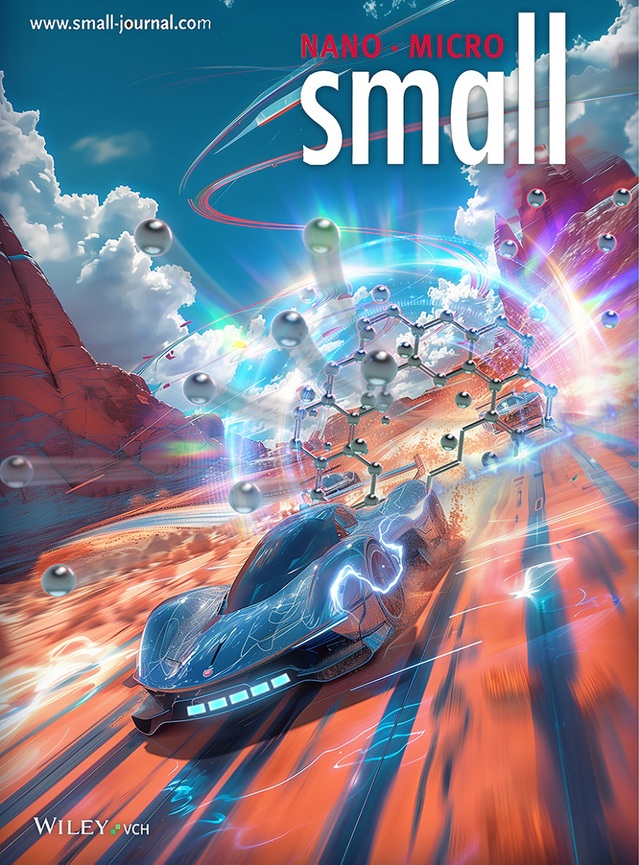A teacher and an Undergraduate Student from the School of Materials Science and Physics Publish a Cover Paper in Small
Publisher : Time : 09.May 2024 Browse the number :

Enhancing the energy density of ionic secondary batteries holds significant importance in furthering the advancements in energy storage technology and satisfying the escalating demand for energy. Charcoal emerges as the most valuable anode material, attributed to its superior electrical conductivity, robust physicochemical stability, cost-effectiveness, and environmental sustainability. The development of cutting-edge carbon anode materials contributes to high energy-power density energy storage devices, which plays a pivotal role in facilitating the “carbon for carbon” transformation and achieving “carbon peak” and “carbon neutrality”.
Xiong Jianzhen, a senior undergraduate student majoring in New Energy Materials and Devices at the School of Materials Science and Physics, supervised by Chen Yaxin from the Institute of Advanced Chemical Power Supplies, proposed a method for realizing in-situ defect engineering of graphite nanocarbon through atomic self-activation strategy. The outcomes of this research have been published as a cover paper in Small, a prestigious international Division I top journal with IF=13.3. The paper, entitled “In-Situ Defect Engineering in Carbon by Atomic Self-Activation to Boost the Accessible Low-Voltage Insertion for Advanced Potassium-Ion Full-Cells”, is co-authored by Xiong Jianzhen as the first author and Chen Yaxin as the corresponding author. Both of them put China University of Mining and Technology (CUMT) as the only organization.
This study introduces an atomic self-activation strategy that facilitates the in-situ defect engineering of graphitic nanocarbon and effectively enhances the rapid embedding of potassium ions within the microcrystalline layers at lower potentials, thereby guaranteeing a superior operating potential for the full potassium ion battery. The nickel atoms present within the precursor serve as catalysts in facilitating the deposition of carbon atoms onto the surface, ultimately resulting in the formation of a microcrystalline shrapnel layer structure with short-range order. Meanwhile, influenced by the activation of potassium ions in the precursor, carbon atoms tend to form gas release, leaving carbon vacancy defects on the atomic scale, and the defect channels widely distributed in graphite microcrystals help promote high-performance electrochemical energy storage. This study offers strategic guidelines for the design of sophisticated carbon anode materials, along with profound insights into the development of high-performing full batteries and the underlying energy storage mechanisms.